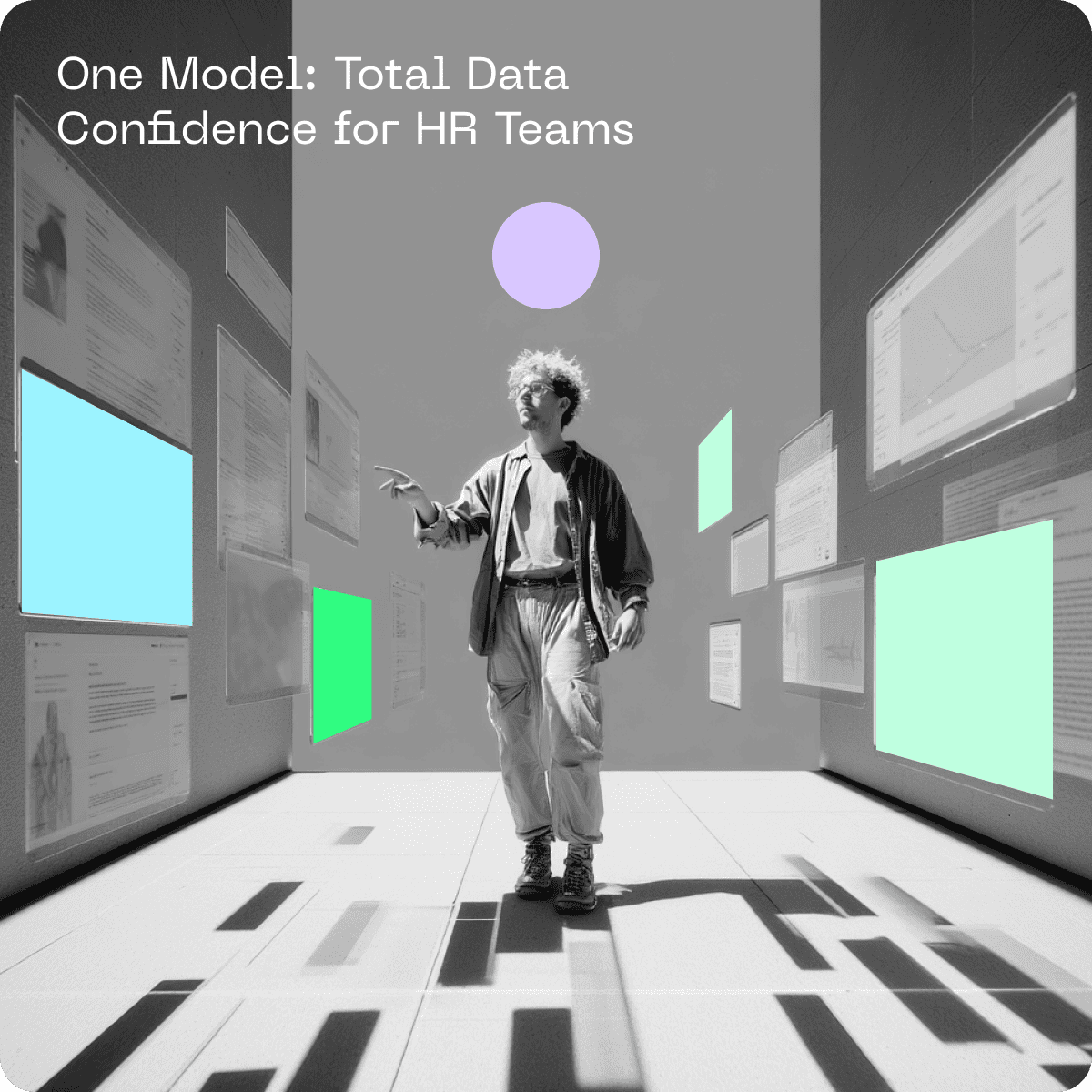HR data is messy—full of unique definitions, transactions, and constantly shifting processes. Tracking something as simple as headcount can get complicated fast, especially when you add in hiring, promotions, lateral moves, and leaves of absence. Every metric demands precision, consistency, and tight governance.
(In this final post of 3, we share how One Model's approach enables total data confidence. Catch up with Part 1 and Part 2.)
The Risk of Losing Context
Traditional business intelligence (BI) tools aren’t built for the way HR works. They handle finance and operations data well enough, but HR is different. People don’t move through an organization in straight lines, and that creates a web of data that BI tools struggle to untangle.
When HR teams hand off data management to external tech groups or rely on generic BI platforms, they lose critical context—the kind of business understanding that makes data truly useful. Worse, without clear ownership and governance, different teams start defining metrics in their own ways. That’s when inconsistencies creep in, confusion spreads, and trust in the numbers starts to erode.
A Solution Built for HR
A purpose-built HR model acts as a single source of truth—owned and governed by HR itself. It doesn’t just ensure accuracy; it makes the data actionable in real time.
Take, for example, a talent acquisition team using One Model’s HR data framework. They noticed a surge in attrition risk metrics just weeks after launching a new hiring policy. Instead of scrambling months later to diagnose the issue, they were able to pinpoint the problem early and quickly adjust onboarding processes—saving both talent and reputation.
This kind of proactive insight becomes possible when HR owns its data story. With a solid framework in place, teams can:
- Define metrics clearly: No more guesswork around headcount or movement tracking.
- Ensure consistency: Automated pipelines keep data aligned and up to date without manual “fixes.”
- Retain control: HR manages its own data definitions, rather than relying on external teams unfamiliar with HR’s complexities.
- Enable proactive decision-making: Spot red flags early and adapt processes quickly.
Confidence in data is more than a technical goal—it’s a strategic imperative. When HR owns its data story, backed by clarity and precision, it earns a permanent seat at the table. By embracing transparency, literacy, and purpose-built solutions, HR leaders can step into their rightful role as strategic powerhouses—turning raw numbers into trusted insights that drive business forward.
 Download our new Ebook or explore more blogposts to learn how HR leaders actually gain data trust—and sustain it—in the real world.
Download our new Ebook or explore more blogposts to learn how HR leaders actually gain data trust—and sustain it—in the real world.
- Why Rock-Solid Data Confidence is HR's Secret Weapon
- The Confidence Gap: Why Data Trust Definites HR's Strategic Influence
No validation, no trust. That’s why One Model handles validation for you — so your team can act with confidence, not doubt.
Our VP of People Analytics Strategy Richard Rosenow explains how it works.

